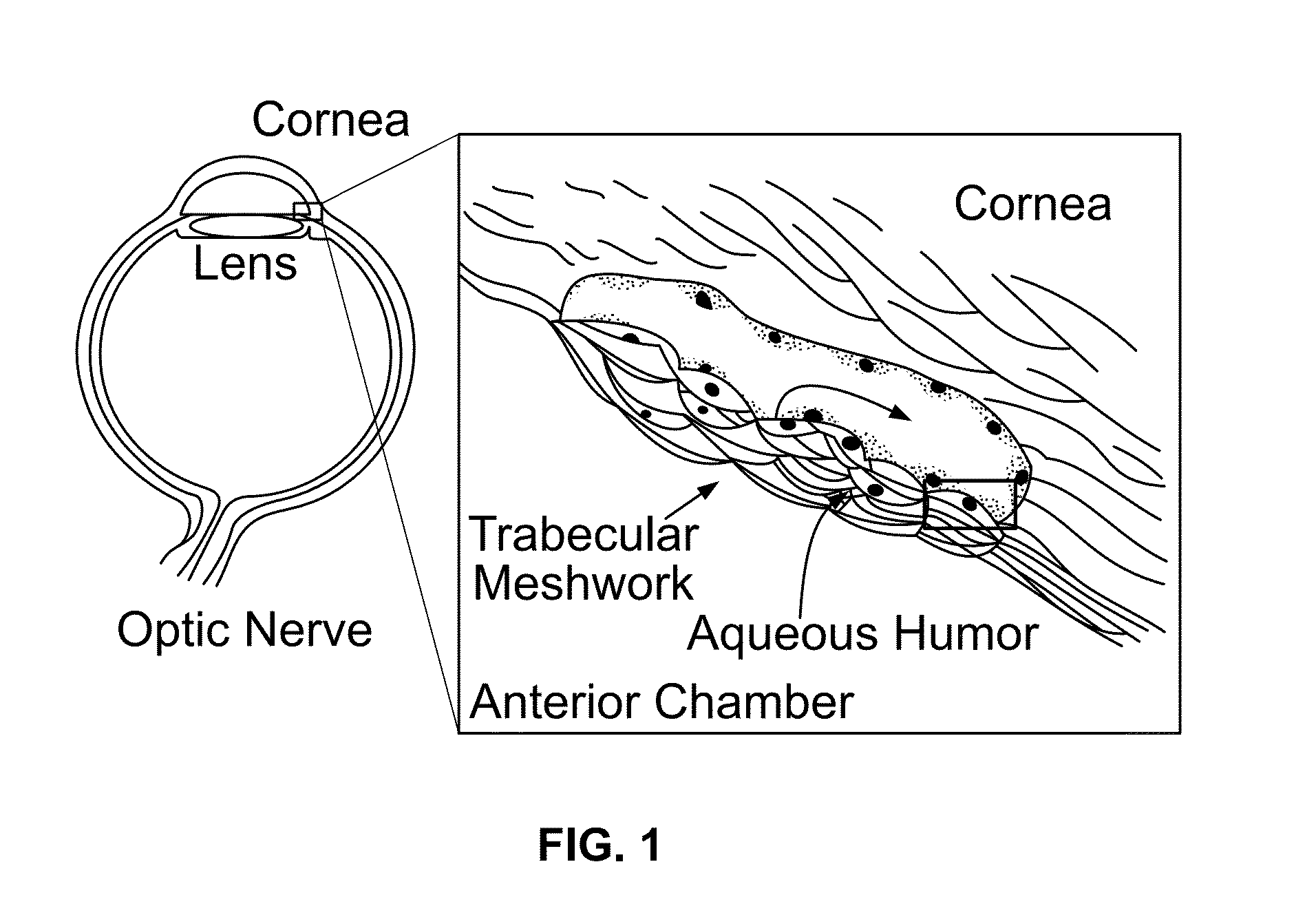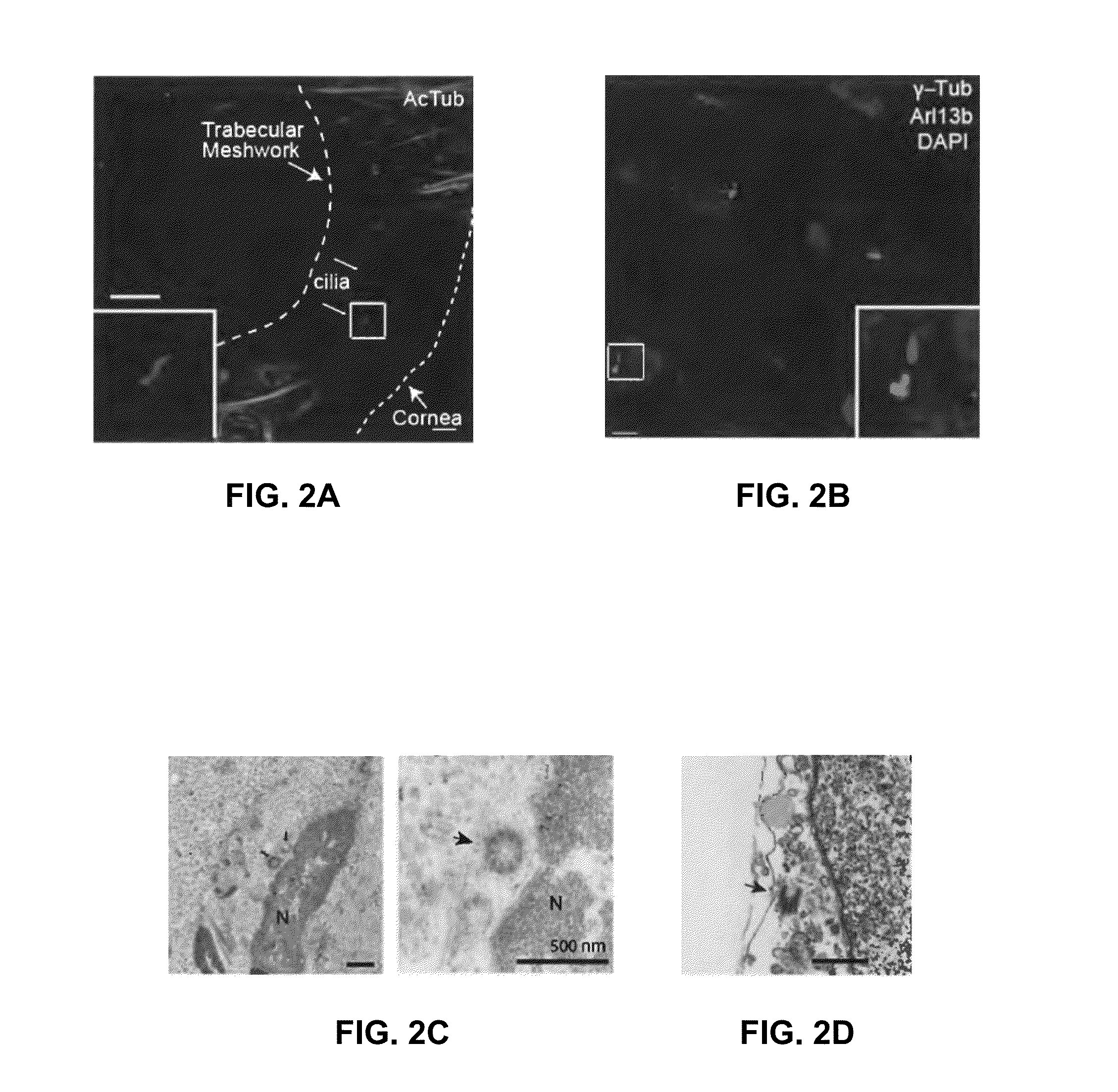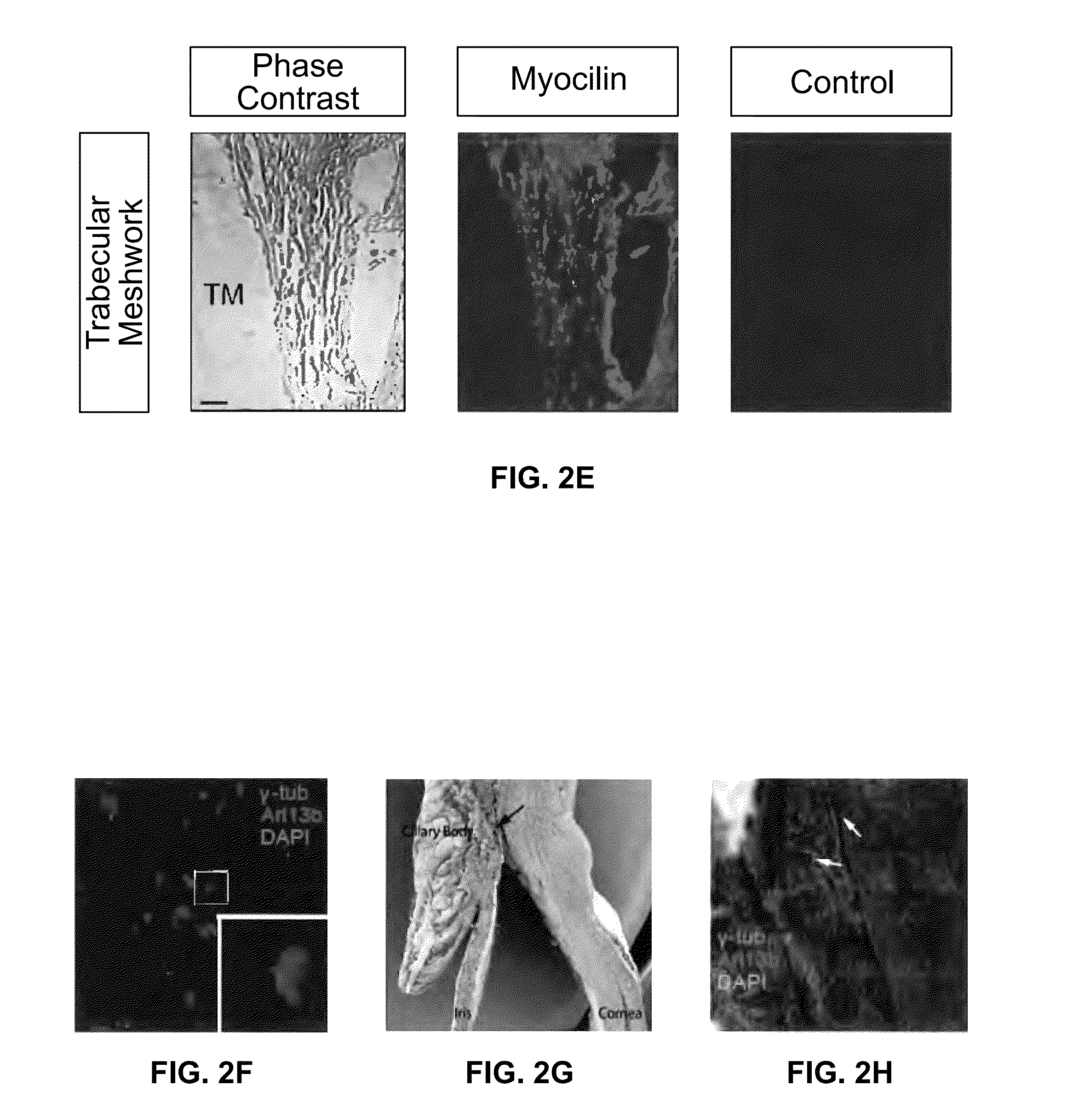Targeting primary cilia to treat glaucoma
- Summary
- Abstract
- Description
- Claims
- Application Information
AI Technical Summary
Benefits of technology
Problems solved by technology
Method used
Image
Examples
example 1
[0126]In this Example, isolated trabecular meshwork (TM) tissue from the anterior segment of human eyes was analyzed for the presence of cilia by immunofluorescence and electron microscopy.
[0127]Trabecular meshwork removed from human donor eyes and surgical TM specimens during glaucoma surgery were immunostained with anti-Arl13b, acetylated α-tubulin (AcTub,), γ-tubulin (γ-Tub), and DAPI (to visualize cell nuclei). TM sections of human eyes were fixed, sectioned and electron microscopy performed. TEM images showed basal body and axonemal structures (FIG. 1, arrows).
[0128]Trabecular meshwork (TM) tissue from the anterior segment of the eye contains cilia-like structures (see schematic illustration in FIG. 1). As shown in FIGS. 2A and 2B, primary cilia were detected in TM tissues by immunostaining for acetylated α-tubulin or Arl13b, a small GTPase localized in the cilia, while the basal body was detected by staining for γ-tubulin. Collectively, this revealed numerous cilia-like struct...
example 2
[0131]In this Example, the effect of pressure changes on cilia length in TM cells was determined.
[0132]HTM cells were serum starved for 48 hours, cultured in a pressure chamber at 0 mmHg, 30 mmHg and 50 mmHg pressure for 0 hour, 1 hour and 3 hours. After cell fixation, cilia were imaged by immunostaining for acetylated α-tubulin. As shown in FIG. 4A, cilia length was reduced by pressure. Average cilia lengths were 5.3±0.2 μm in the normal pressure groups and 3.9±0.2 μm in the high pressure (30 mmHg and 50 mmHg) groups (FIG. 4B). Ciliary length reduction by pressure occurred in a time-dependent fashion (FIG. 4C). Changes in ciliary length were both time- and dose-dependent processes.
[0133]TNFα and TGFβ are both highly abundant in the aqueous humor of patients with acute and chronic open angle glaucoma. To determine whether the expression of TNFα was upregulated in response to pressure, its transcript levels were measured by qRT-PCR under different pressures.
[0134]HTM cells were serum...
example 3
[0138]To further characterize the distribution of ciliary proteins under elevated pressure conditions, intraflagellar transport (IFT) proteins were examined.
[0139]The distribution of proteins involved in both anterograde (IFT57, IFT88) and retrograde (IFT20, IFT43, IFT144) ciliary trafficking were examined using immunohistology. Specifically, HTM cells were serum-starved to induce ciliogenesis, followed by treatment with or without elevated pressure (50 mmHg). Representative images of immunostaining with antibodies for IFT88 (green), acetylated α-tubulin (red), and DAPI (blue) show the loss of IFT88 in the distal tip of cilia under elevated pressure conditions (FIGS. 5 and 6). Only IFT88 was found to have a markedly altered distribution under increased pressure conditions. In control HTM cells, IFT88 distributed to the base as well as to the tip of the axoneme; in HTM cells treated with pressure, IFT88 accumulated at the base of the cilia with a marked decrease at the ciliary tip.
[0...
PUM
| Property | Measurement | Unit |
|---|---|---|
| Dimensionless property | aaaaa | aaaaa |
| Dimensionless property | aaaaa | aaaaa |
| Pressure | aaaaa | aaaaa |
Abstract
Description
Claims
Application Information
 Login to View More
Login to View More - R&D
- Intellectual Property
- Life Sciences
- Materials
- Tech Scout
- Unparalleled Data Quality
- Higher Quality Content
- 60% Fewer Hallucinations
Browse by: Latest US Patents, China's latest patents, Technical Efficacy Thesaurus, Application Domain, Technology Topic, Popular Technical Reports.
© 2025 PatSnap. All rights reserved.Legal|Privacy policy|Modern Slavery Act Transparency Statement|Sitemap|About US| Contact US: help@patsnap.com



